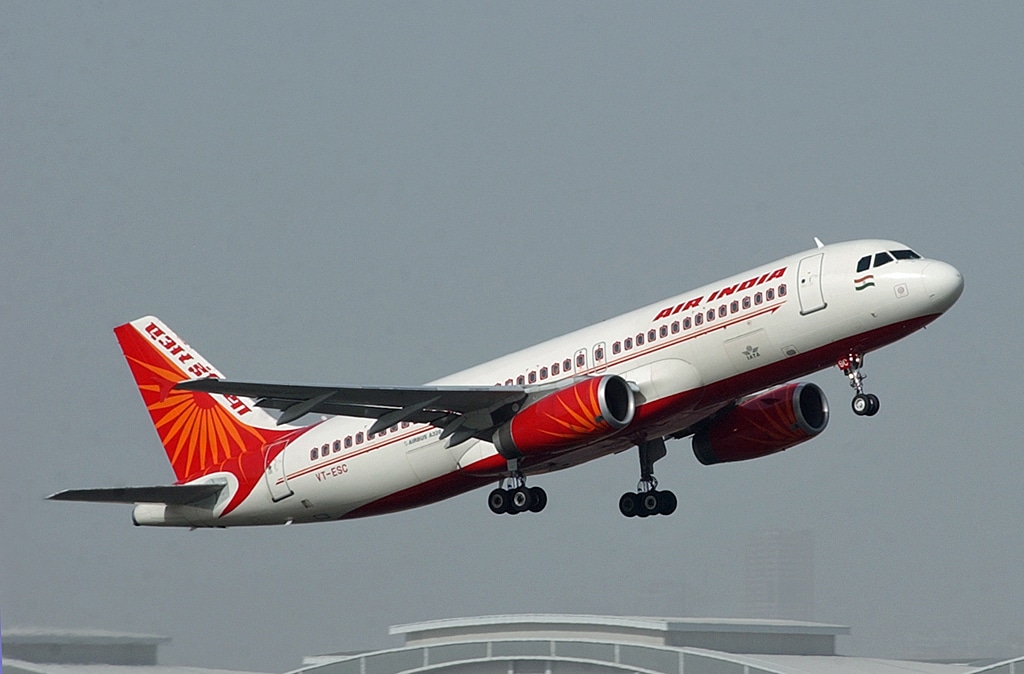Aerospace
Tata’s 5-year plan to make Air India great again
Air India today unveiled its comprehensive transformation plan, to establish itself, once again, as a world-class global airline

New Delhi, Sep 15, 2022 – Air India today unveiled its comprehensive transformation plan,
to establish itself, once again, as a world-class global airline with an Indian heart – the absolute
best in class in customer service, technology, product, reliability, and in hospitality.
The plan is fittingly titled “Vihaan.AI”, which in Sanskrit signifies the dawn of a new era, with
identified objectives for Air India over the next 5 years.
Air India will strive to increase its market share to at least 30% in the domestic market
As part of Vihaan.AI, Air India has put into place a detailed roadmap with clear milestones
focussing on dramatically growing both its network and fleet, developing a completely
revamped customer proposition, improving reliability and on-time performance, and taking a
leadership position in technology, sustainability, and innovation, while aggressively investing
behind the best industry talent. Over the next 5 years, Air India will strive to increase its market
share to at least 30% in the domestic market while significantly growing the international routes from
the present market share. The plan is aimed at putting Air India on a path to sustained growth,
profitability and market leadership.
The Airline’s CEO, Mr. Campbell Wilson along with senior management members who are
together driving this transformation, unveiled the Vihaan.AI plan with the entire organization
through Workplace, its virtual communication and engagement platform. Over the coming
days and weeks, the management team will engage employees across regions, departments,
and locations through a series of physical and hybrid sessions.
Vihaan.AI has been developed after extensive feedback from Air India employees
Employees on their aspirations and hopes for the airline’s growth. Vihaan.AI focuses on five key pillars,
exceptional customer experience, robust operations, industry-best talent, industry
leadership, and commercial efficiency and profitability. While the immediate focus of the
airline remains on fixing the basics and readying itself for growth (Taxiing Phase), the more
medium-to-long term focus will be on building for excellence and establishing scale to
become a global industry leader (Take Off & Climb phases).
90 years ago, exactly a month from today, a young JRD Tata piloted the first flight of the
airline that would become Air India. Since then, Air India and its employees have persevered
through many challenges before its homecoming back to the Tata group. Vihaan.AI is the
roadmap to restoring Air India on the global map, making it the world-class, digital, Indian
airline it is meant to be.
Top 5 best leadership traits that set Emirates besides other airlines.(Opens in a new browser tab)
Air India is the world-class airline
Commenting on Vihaan.AI, Mr. Campbell Wilson, MD, and CEO, Air India said, “This is the
beginning of a historic transformation for Air India and the dawn of a new era. We are laying
the foundation for a brave new Air India, with a renewed sense of purpose and incredible
momentum. Vihaan.AI is our transformation plan to make Air India the world-class airline it
once was, and it deserves to be again. We are absolutely focussed on being recognized
as a world-class airline serving global customers, with a proudly Indian heart.”
How Embraer E195 will be the best fit for Air India

Aerospace
Which is bigger 777x or 787 aircraft ?

The 777X is a new series of the Boeing 777 family and is designed to be larger and more efficient than its predecessor. It features two variants: the 777-8 and the 777-9, being the larger of the two.
The Boeing 777X emerges as the larger sibling within the Boeing family, representing a significant leap forward in both size and efficiency. Comprising two variants, the 777-8 and the 777-9, the latter takes the crown as the larger of the two. With its expansive fuselage and impressive wingspan, the 777X is tailored for long-range journeys and boasts a substantial passenger capacity.
On the other hand, the Boeing 787, affectionately known as the Dreamliner, occupies a niche in the market as a smaller yet formidable aircraft designed for medium to long-range flights. Its distinguishing feature lies in its composite fuselage, a technological marvel that renders it lighter and more fuel-efficient compared to conventional aluminum counterparts. The Boeing 777X is larger than the Boeing 787 aircraft.
When it comes to passenger capacity, the 777-9 reigns supreme, typically accommodating a sizeable contingent of 400-425 passengers in its standard configuration. In contrast, the 787, with its more modest dimensions, typically carries between 240-290 passengers, depending on the variant and layout.
One of the remarkable innovations introduced with the 777X is its folding wingtips, a feature designed to address the logistical challenges of accommodating such a large aircraft in conventional airport gates. These folding wingtips enable the 777X to retract its wings, allowing it to fit into gates designed for smaller aircraft while still reaping the benefits of an extended wingspan during flight, thereby enhancing fuel efficiency and operational flexibility
Aerospace
China Secures Production Certificate for Mass Production of Pilotless eVTOL Aircraft

The first passenger-carrying pilotless electric vertical takeoff and landing (eVTOL) aircraft in the world, the EH216-S, has received the Production Certificate for its eVTOL aircraft from the Civil Aviation Administration of China (CAAC).
This is a significant milestone for EHang Holdings Limited, the leading UAM technology platform company in the world. This outstanding accomplishment is another big step towards mass manufacturing for the eVTOL aircraft and the ensuing commercial operations, building on the ground-breaking acquisition of the Type Certificate and the Standard Airworthiness Certificate for the EH216-S.
The PC is a crucial certificate that the aircraft maker receives from the CAAC, the country’s aviation authority. By obtaining this certificate, EHang has demonstrated that it has set up a quality management system for mass production that satisfies the airworthiness regulation standards set forth by the CAAC, and the company has been given permission to continue producing mass quantities.
It is also a strong guarantee of the calibre of the goods made by EHang. Raw materials, supplier management, manufacturing organisation, production quality control, aircraft pre-delivery test, after-sales repair and maintenance, etc. are all included in the mass production quality management system for the EH216-S.
To ensure that every aircraft and its components that roll off the production line strictly adhere to the approved type design and safety requirements, the system sets clear guidelines and documentation for every step in the production procedure. This ensures comprehensive traceability and safety control.
Aerospace
Four Airbus A380 Superjumbos lined up to be scrapped

In a strategic move aimed at reclaiming valuable resources from the iconic Airbus A380 aircraft, VAS Aero Services and Dr. Peters Group have announced a significant collaboration.
This partnership marks a milestone in aviation logistics and aftermarket services, with four of these colossal planes slated for teardown and redistribution of used serviceable material (USM).
The venture between VAS Aero Services, renowned for its expertise in aircraft dismantlement, and Dr. Peters Group, a prominent Germany-based investment fund management firm, underscores a commitment to sustainable aviation practices. This isn’t their first foray into scrapping A380s; their successful partnership has already seen the dismantlement of these aircraft, making them pioneers in this niche.
Under the agreement, the latest consignment brings the tally to eight A380s entrusted to VAS by Dr. Peters Group. Managing Director Christian Mailly of Dr. Peters Group emphasized the trust placed in VAS, citing their unparalleled capabilities in dismantlement and aftermarket sales network. It’s a strategic move in response to the growing demand for quality USM parts, particularly with the resurgence in reliance on the A380.
Notably, the teardown process will be carried out at various locations, optimizing the positioning of harvested parts to cater to different markets. While some parts will be positioned in Europe to support operators in the region and the Middle East, others will remain in the Asia-Pacific region. This meticulous strategy ensures efficient access to spare parts, benefiting MROs and airlines across these markets.
The decision to retire these A380s comes at a time when operators are reassessing fleet strategies amidst evolving market dynamics. Despite initial plans for quick retirement due to the emergence of more fuel-efficient alternatives, factors such as a rebound in long-haul demand and delays in new widebody deliveries have prompted operators to reconsider. The A380, with its unique capacity and capabilities, presents a practical solution for short-term capacity management.



























